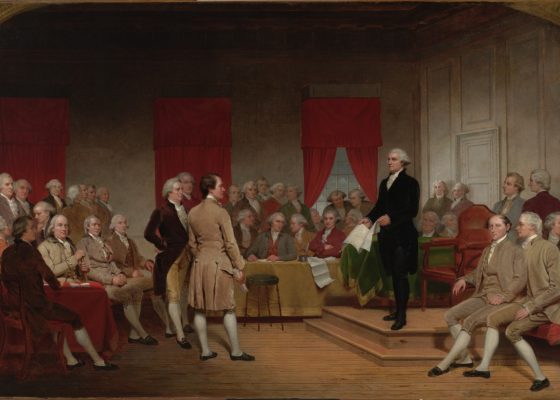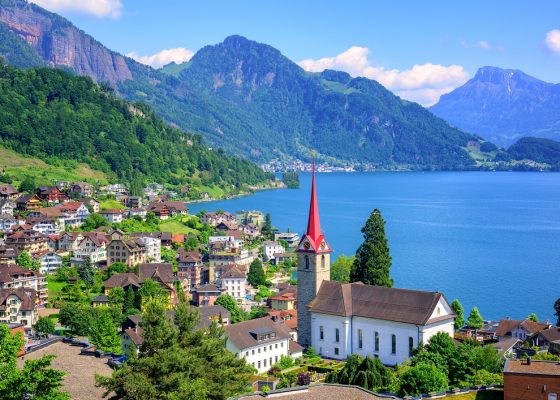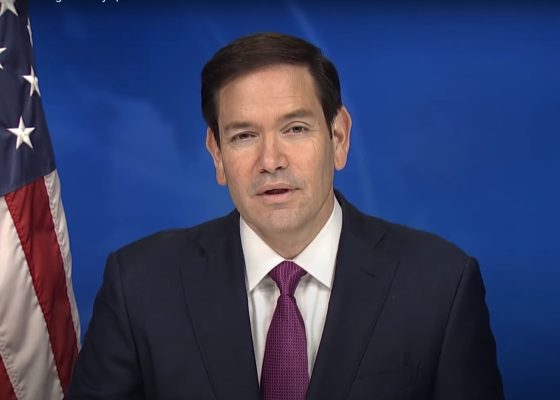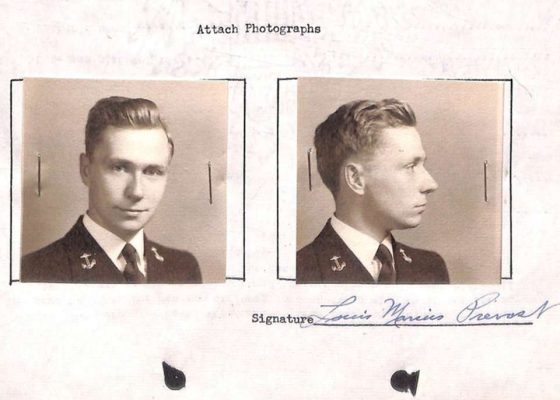By Patricia Kingswell
January 2020: As a misty drizzle washed over the outside world, Mr. Wang, a 33-year-old University lecturer who’d been enjoying a day with his parents, wife, and two kids, started struggling to catch his breath. Forced to lie down, Mr. Wang could do little more than witness the darkness of night beckon an increasing tightness in his chest.
He was in the outskirts of Wuhan–a city paralyzed by the spread of the novel coronavirus. Deciding to withdraw alone to his own flat, Mr. Wang navigated his way through the back roads, and arriving home, collapsed into his sofa. Numerous failed attempts to get through to the emergency services, who already had their hands full, only increased his sense of panic.
Mr. Wang was one of many who suffered alone. Since Zhong Nanshan, lead investigator of the National Health Commission announced evidence of human-to-human transmission, the Chinese government ordered a lockdown on the whole Hubei Province, with its population of 67 million.
“It felt like the end of the world,” Mr. Wang recounted.
Two studies led by the University of Hong Kong’s dean of medicine, Gabriel Leung, published in the New England Journal of Medicine and the British medical journal The Lancet, estimates that on average, each infected patient has passed the virus–which incubates for 5 to 6 days before showing symptoms–to 3 additional people; yet on a positive note, the team witnessed no cases in children under the age of 15.
Millions of people who departed China’s Hubei before the lockdown are being hunted down for quarantine, and in the U.S., hundreds of people returning from China are facing mandatory two-week quarantines.
“Protecting public health is a delicate balance between the rights and freedom of individuals and the safety of society,” says Pam Fessler, author of the book Carville’s Cure: Leprosy, Stigma, and the Fight for Justice.
“But this latest outbreak raises similar questions to those health authorities grappled with decades ago. Are quarantines and isolation the most effective way to contain a disease? Do they make people more reluctant to identify themselves as potential victims?” asks Fessler, while comparing the way the government is handling the coronavirus with the way that leprosy patients were treated in the last century.
Globally, about 200,000 people are diagnosed each year with leprosy, and many still chose to keep their diagnosis private or delay seeking treatment for fear of being treated cruelly. Just like in the late 1800’s, when Americans feared a leprosy pandemic and Asians were stigmatized, Asian-Americans are now experiencing unfair treatment, according to NPR’s Maria Godoy. One Asian student reported being told to leave an American coffee shop and “take the coronavirus with her.”
We’re seeing another example, where the stigma can become much more dangerous than the actual disease.
“People don’t call and seek health care,” says Wendy Parmet, a professor of health law policy at Northeastern University, speaking to NPR.
“And health care providers become fearful of treating patients, because they don’t want to get caught up in the quarantine… It backfires, because people head for the hills,” she says.
An increasing number of people are facing 14-day quarantines as health officials globally are trying to stop the tide of viral outbreak, which has killed 2,128 people and infected more than 75,730 worldwide (as of February 19).
Among those finding themselves in the surprising circumstance of quarantine is master’s degree student, Spencer Fehrenbacher, an American citizen who boarded the cruise ship Diamond Princess with friends to celebrate the Lunar New Year.
“It is beyond frightening,” said Fehrenbacher, after learning that the number of people aboard the ship who tested positive for the coronavirus had increased from a dozen to eventually 64. Two have since died of the virus. More than 3,000 people—including 428 Americans were stuck in Yokohama, Japan on the floating quarantine, while only being allowed out for fresh air for just over an hour a day.
Also on board was Rebecca Frasure, who was blown away by the news that she’d contracted the coronavirus. Her husband Kent, who tested negative, was banned from going to the hospital with her.
“I may be there for three days to I-don’t-know-how-long,” she shared with CNN. “I guess it depends on if I develop any further symptoms. So that really comes as a blow right now.”
“Donald Trump, save us. Get us off the ship,” cried Milena Basso and Gaetano Cerullo, newlyweds on the ship, who had spent two years saving for the honeymoon they were trapped in.
“We should be quarantined in a sanitary environment that’s safe, not on a cruise ship that’s already infected,” Basso told CNN.
U.S. citizens evacuated from Wuhan and under a federally mandated quarantine–the first such order in the US in 50 years–appear more positive. Among the 195 people quarantined–including diplomats, infants, a football player, and a theme-park designer–is professional football player, Jarred Evans, who’s in California’s March Air Reserve Base in Riverside County for 14 days.
He says there are about 14 kids in the quarantine group, ranging in age from as young as 11 months to about 13 years.
“We’re all getting to know each other,” Evans told ABC News, saying that friendships were starting to form. “There’s so many different types of people from all over America.”
“It was surreal,” recalls theme-park designer, Matthew McCoy, recalling the airplane crew aboard the escape flight out of Wuhan in hazardous material suits. “They were trying to keep us calm, but they had these guys covered from head to toe taking your temperature. It felt like a C.I.A. cargo plane,” he says.
And back in quarantine, it’s all a matter of waiting and making the most of the refreshments, cookies and toys offered.
“Everybody is in great spirits,” says Evans. “Nobody is panicking or freaking out.”








Cancel anytime


Using our website
You may use the The Middle Land website subject to the Terms and Conditions set out on this page. Visit this page regularly to check the latest Terms and Conditions. Access and use of this site constitutes your acceptance of the Terms and Conditions in-force at the time of use.
Intellectual property
Names, images and logos displayed on this site that identify The Middle Land are the intellectual property of New San Cai Inc. Copying any of this material is not permitted without prior written approval from the owner of the relevant intellectual property rights.
Requests for such approval should be directed to the competition committee.
Please provide details of your intended use of the relevant material and include your contact details including name, address, telephone number, fax number and email.
Linking policy
You do not have to ask permission to link directly to pages hosted on this website. However, we do not permit our pages to be loaded directly into frames on your website. Our pages must load into the user’s entire window.
The Middle Land is not responsible for the contents or reliability of any site to which it is hyperlinked and does not necessarily endorse the views expressed within them. Linking to or from this site should not be taken as endorsement of any kind. We cannot guarantee that these links will work all the time and have no control over the availability of the linked pages.
Submissions
All information, data, text, graphics or any other materials whatsoever uploaded or transmitted by you is your sole responsibility. This means that you are entirely responsible for all content you upload, post, email or otherwise transmit to the The Middle Land website.
Virus protection
We make every effort to check and test material at all stages of production. It is always recommended to run an anti-virus program on all material downloaded from the Internet. We cannot accept any responsibility for any loss, disruption or damage to your data or computer system, which may occur while using material derived from this website.
Disclaimer
The website is provided ‘as is’, without any representation or endorsement made, and without warranty of any kind whether express or implied.
Your use of any information or materials on this website is entirely at your own risk, for which we shall not be liable. It is your responsibility to ensure any products, services or information available through this website meet your specific requirements.
We do not warrant the operation of this site will be uninterrupted or error free, that defects will be corrected, or that this site or the server that makes it available are free of viruses or represent the full functionality, accuracy and reliability of the materials. In no event will we be liable for any loss or damage including, without limitation, loss of profits, indirect or consequential loss or damage, or any loss or damages whatsoever arising from the use, or loss of data, arising out of – or in connection with – the use of this website.
Last Updated: September 11, 2024
New San Cai Inc. (hereinafter “The Middle Land,” “we,” “us,” or “our”) owns and operates www.themiddleland.com, its affiliated websites and applications (our “Sites”), and provides related products, services, newsletters, and other offerings (together with the Sites, our “Services”) to art lovers and visitors around the world.
This Privacy Policy (the “Policy”) is intended to provide you with information on how we collect, use, and share your personal data. We process personal data from visitors of our Sites, users of our Services, readers or bloggers (collectively, “you” or “your”). Personal data is any information about you. This Policy also describes your choices regarding use, access, and correction of your personal information.
If after reading this Policy you have additional questions or would like further information, please email at middleland@protonmail.com.
PERSONAL DATA WE COLLECT AND HOW WE USE IT
We collect and process personal data only for lawful reasons, such as our legitimate business interests, your consent, or to fulfill our legal or contractual obligations.
Information You Provide to Us
Most of the information Join Talents collects is provided by you voluntarily while using our Services. We do not request highly sensitive data, such as health or medical information, racial or ethnic origin, political opinions, religious or philosophical beliefs, trade union membership, etc. and we ask that you refrain from sending us any such information.
Here are the types of personal data that you voluntarily provide to us:
As a registered users or customers, you may ask us to review or retrieve emails sent to your business. We will access these emails to provide these services for you.
We use the personal data you provide to us for the following business purposes:
Information Obtained from Third-Party Sources
We collect and publish biographical and other information about users, which we use to promote the articles and our bloggers who use our sites. If you provide personal information about others, or if others give us your information, we will only use that information for the specific reason for which it was provided.
Information We Collect by Automated Means
Log Files
The site uses your IP address to help diagnose server problems, and to administer our website. We use your IP addresses to analyze trends and gather broad demographic information for aggregate use.
Every time you access our Site, some data is temporarily stored and processed in a log file, such as your IP addresses, the browser types, the operating systems, the recalled page, or the date and time of the recall. This data is only evaluated for statistical purposes, such as to help us diagnose problems with our servers, to administer our sites, or to improve our Services.
Do Not Track
Your browser or device may include “Do Not Track” functionality. Our information collection and disclosure practices, and the choices that we provide to customers, will continue to operate as described in this Privacy Policy, whether or not a “Do Not Track” signal is received.
HOW WE SHARE YOUR INFORMATION
We may share your personal data with third parties only in the ways that are described in this Privacy Policy. We do not sell, rent, or lease your personal data to third parties, and We does not transfer your personal data to third parties for their direct marketing purposes.
We may share your personal data with third parties as follows:
There may be other instances where we share your personal data with third parties based on your consent.
HOW WE STORE AND SECURE YOUR INFORMATION
We retain your information for as long as your account is active or as needed to provide you Services. If you wish to cancel your account, please contact us middleland@protonmail.com. We will retain and use your personal data as necessary to comply with legal obligations, resolve disputes, and enforce our agreements.
All you and our data are stored in the server in the United States, we do not sales or transfer your personal data to the third party. All information you provide is stored on a secure server, and we generally accepted industry standards to protect the personal data we process both during transmission and once received.
YOUR RIGHTS/OPT OUT
You may correct, update, amend, delete/remove, or deactivate your account and personal data by making the change on your Blog on www.themiddleland.com or by emailing middleland@protonmail.com. We will respond to your request within a reasonable timeframe.
You may choose to stop receiving Join Talents newsletters or marketing emails at any time by following the unsubscribe instructions included in those communications, or you can email us at middleland@protonmail.com
LINKS TO OTHER WEBSITES
The Middle Land include links to other websites whose privacy practices may differ from that of ours. If you submit personal data to any of those sites, your information is governed by their privacy statements. We encourage you to carefully read the Privacy Policy of any website you visit.
NOTE TO PARENTS OR GUARDIANS
Our Services are not intended for use by children, and we do not knowingly or intentionally solicit data from or market to children under the age of 18. We reserve the right to delete the child’s information and the child’s registration on the Sites.
PRIVACY POLICY CHANGES
We may update this Privacy Policy to reflect changes to our personal data processing practices. If any material changes are made, we will notify you on the Sites prior to the change becoming effective. You are encouraged to periodically review this Policy.
HOW TO CONTACT US
If you have any questions about our Privacy Policy, please email middleland@protonmail.com
The Michelin brothers created the guide, which included information like maps, car mechanics listings, hotels and petrol stations across France to spur demand.
The guide began to award stars to fine dining restaurants in 1926.
At first, they offered just one star, the concept was expanded in 1931 to include one, two and three stars. One star establishments represent a “very good restaurant in its category”. Two honour “excellent cooking, worth a detour” and three reward “exceptional cuisine, worth a
Thank you for your participation,
please Log in or Sign up to Vote

123Sign in to your account
Report: Trump Claimed He Threatened to Bomb Moscow and Beijing Over Ukraine and Taiwan